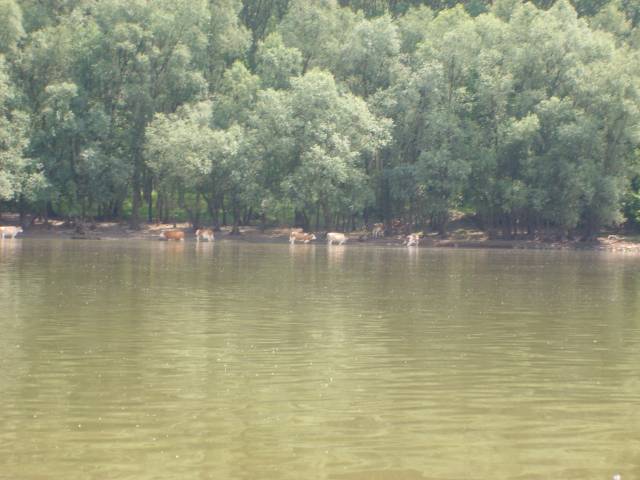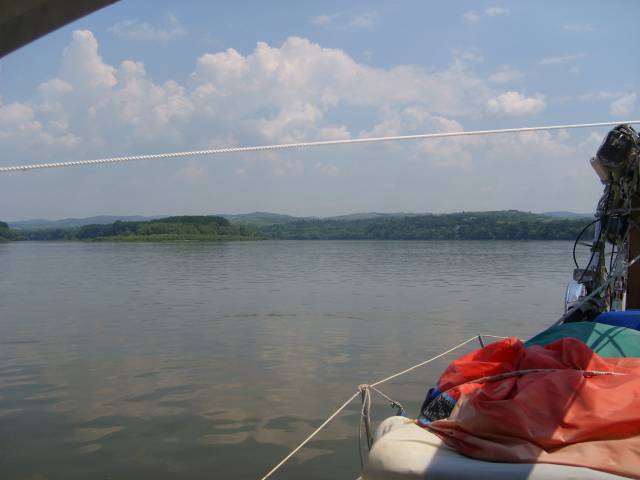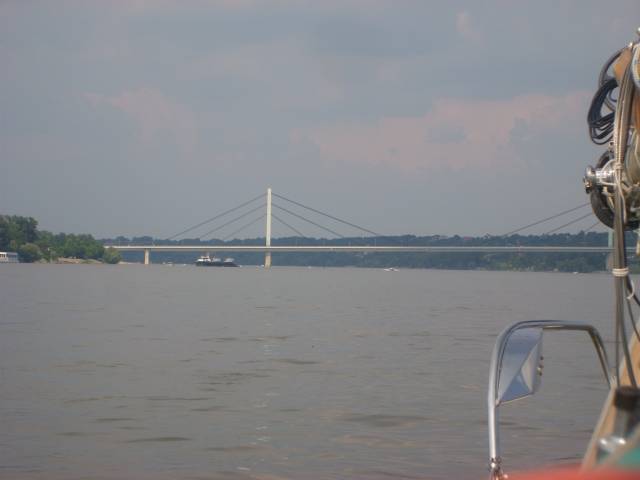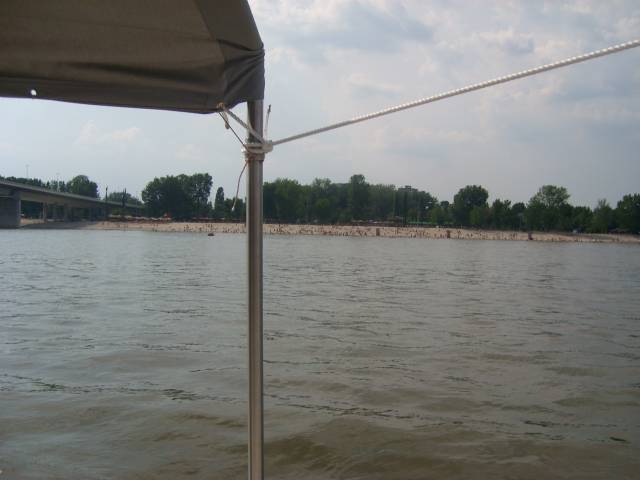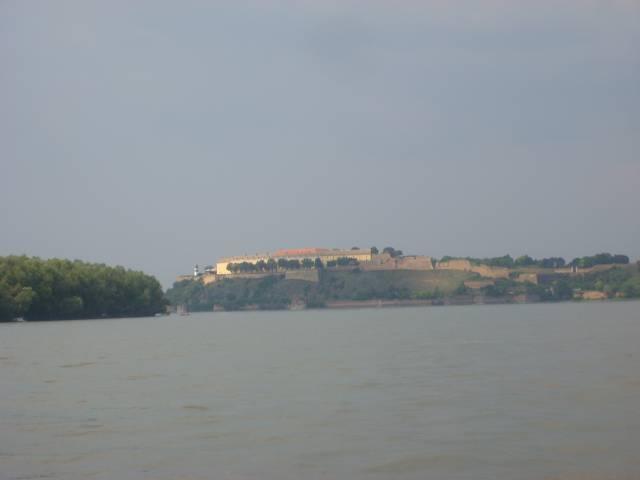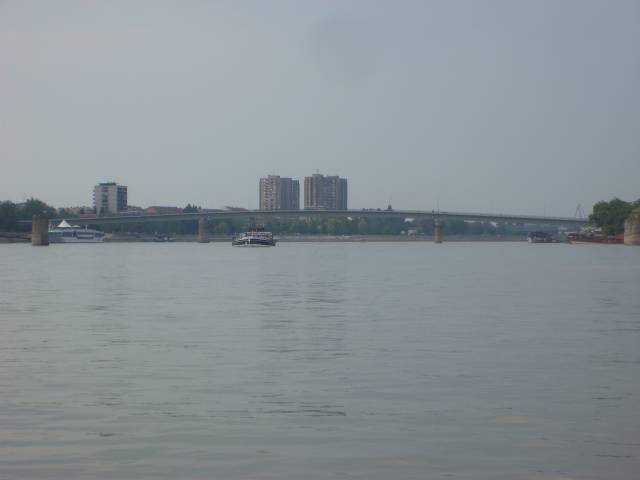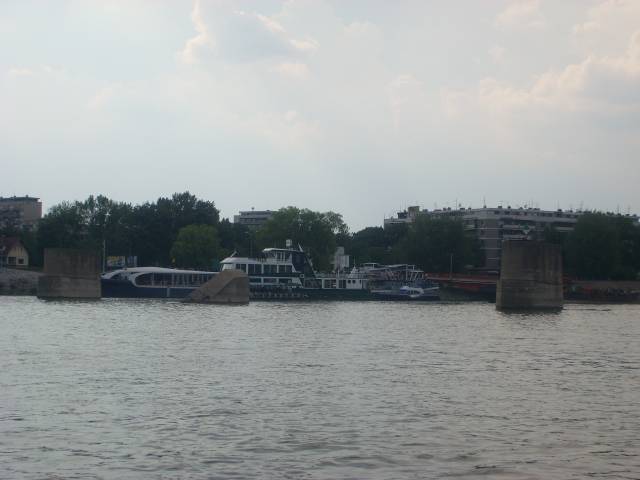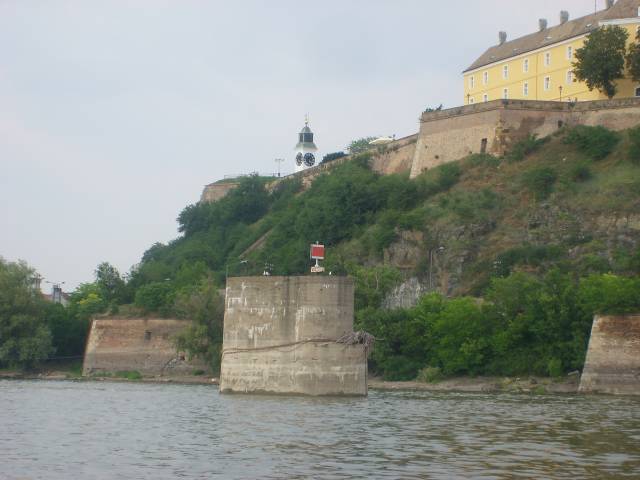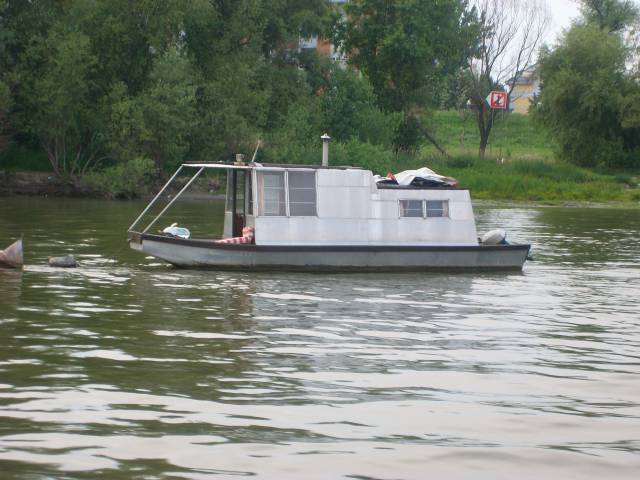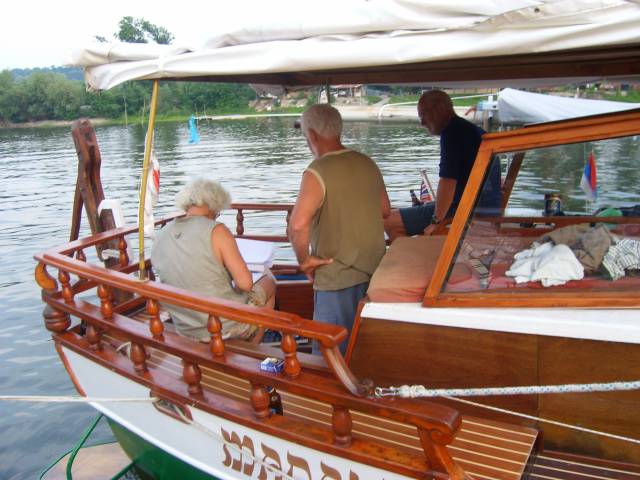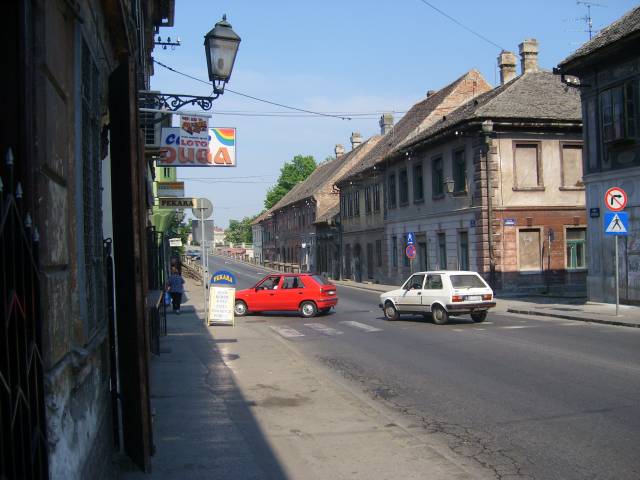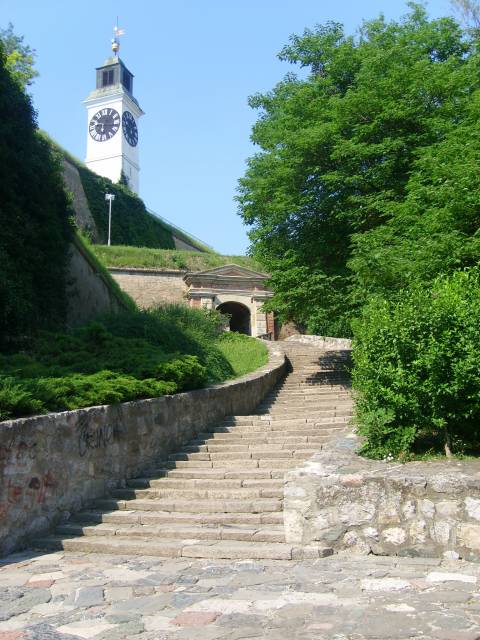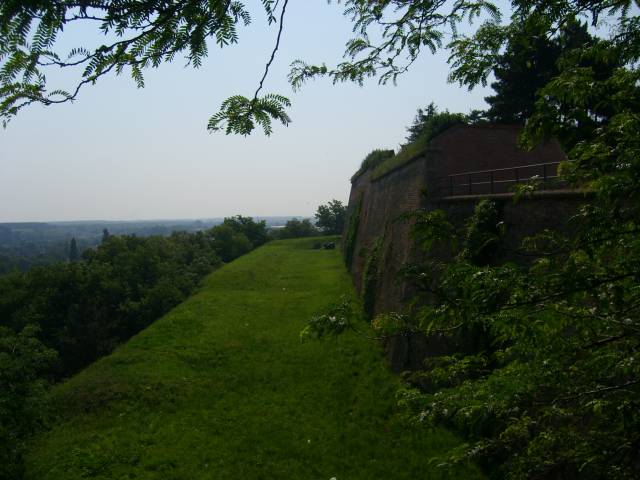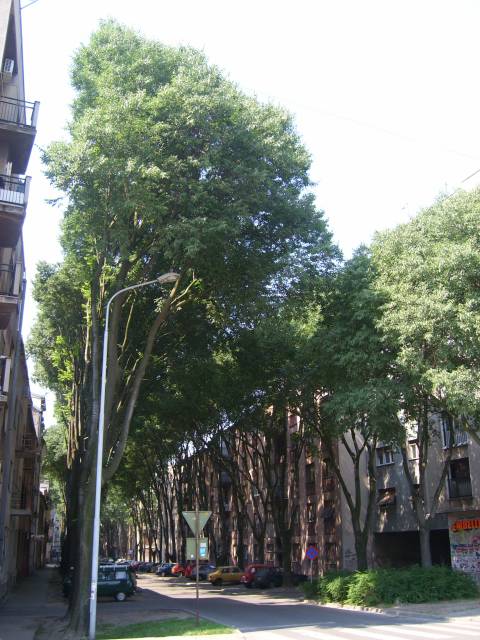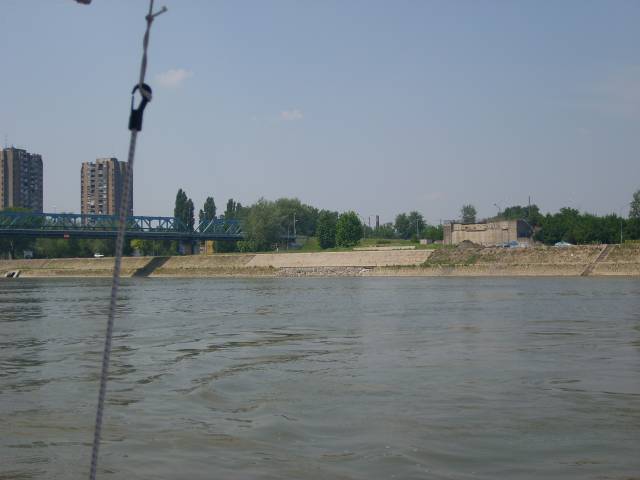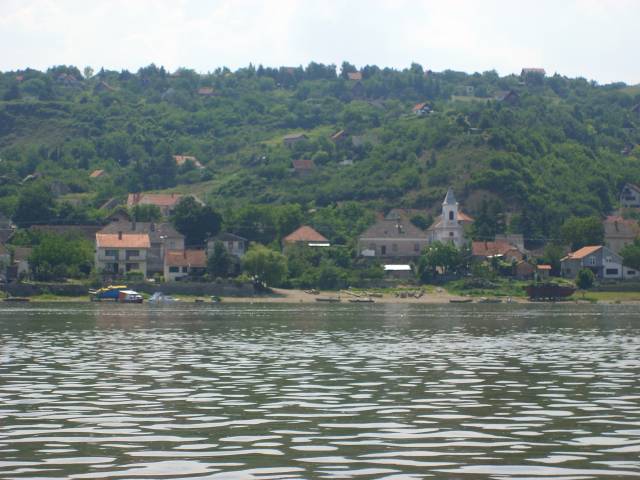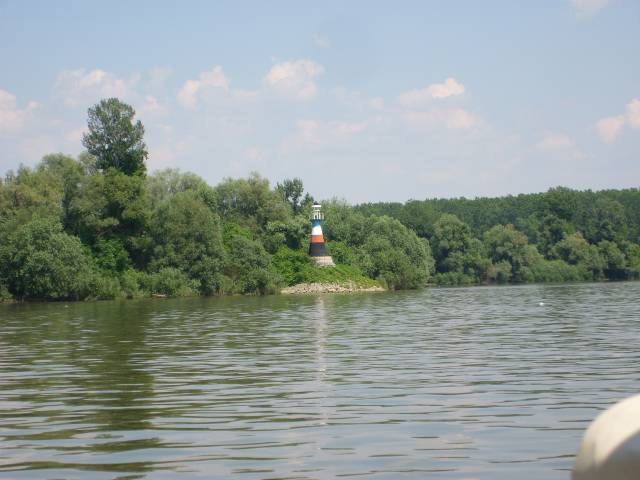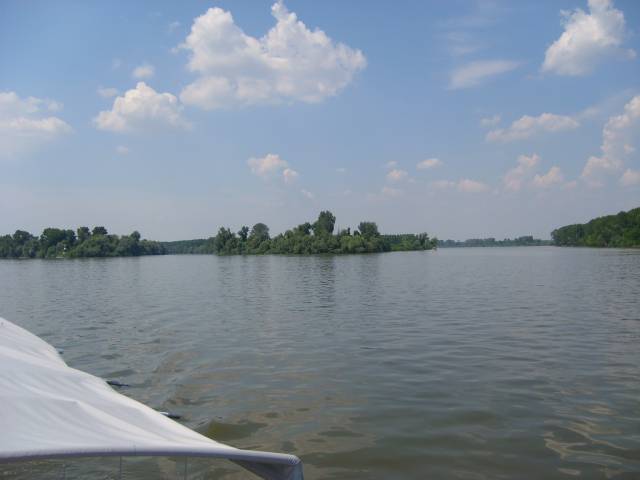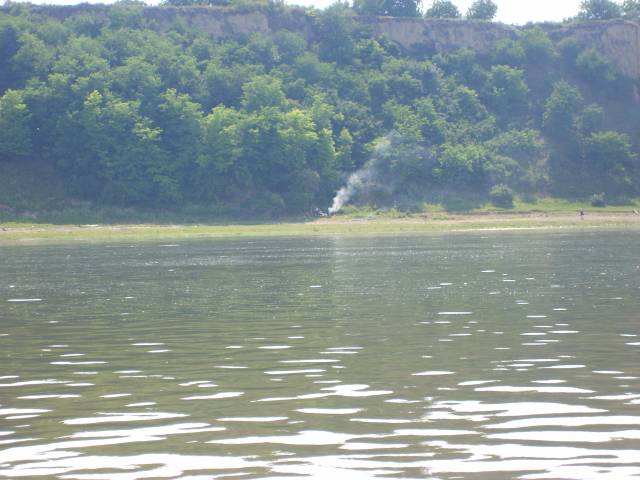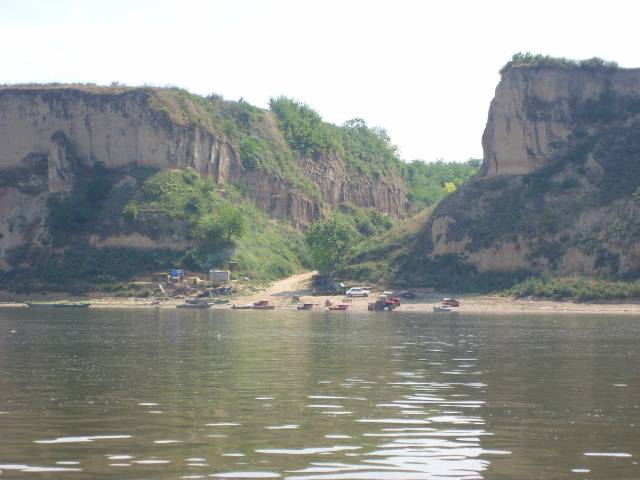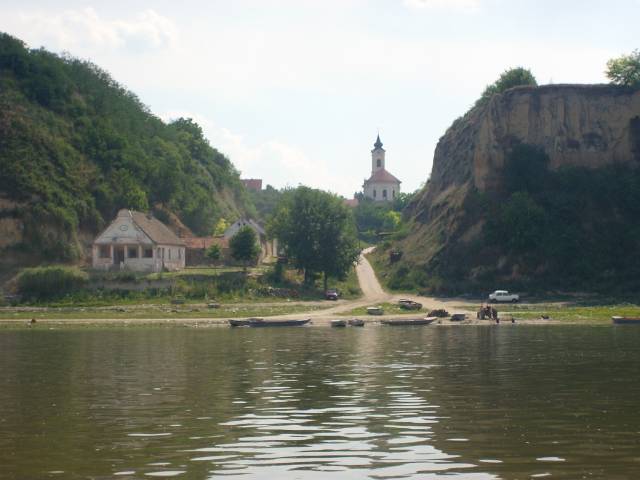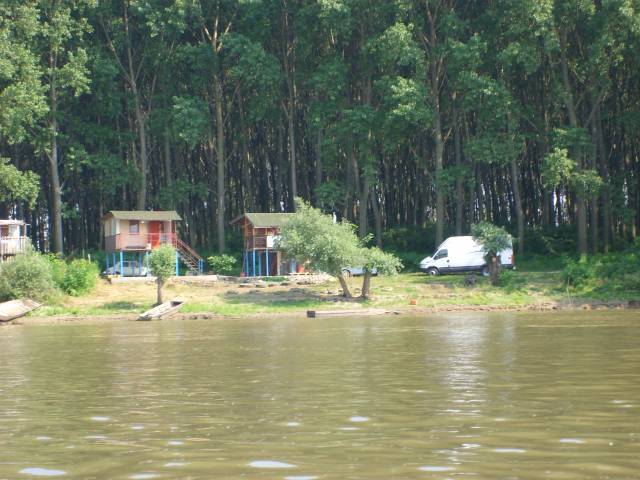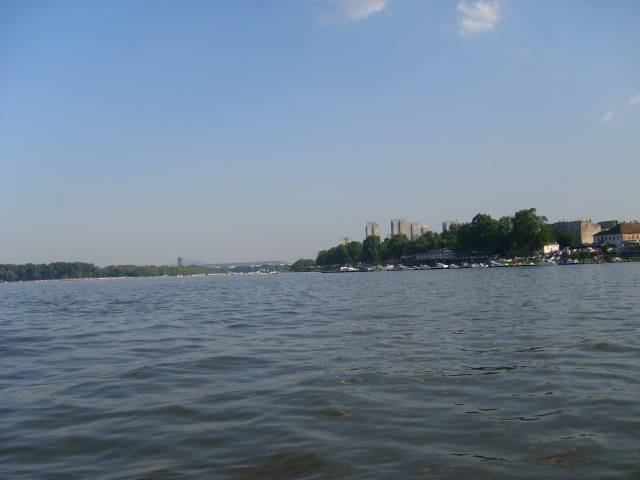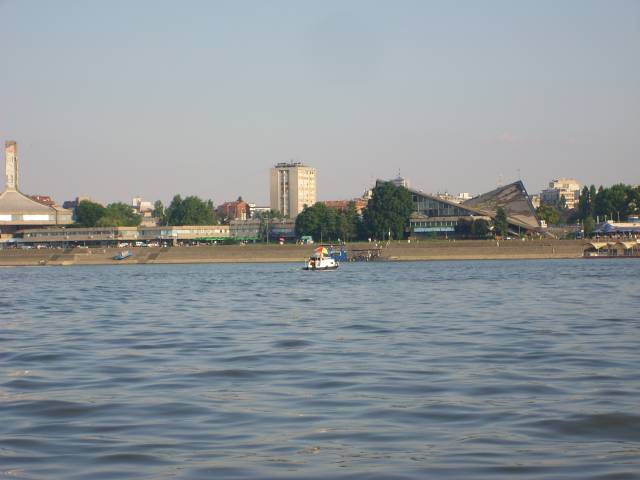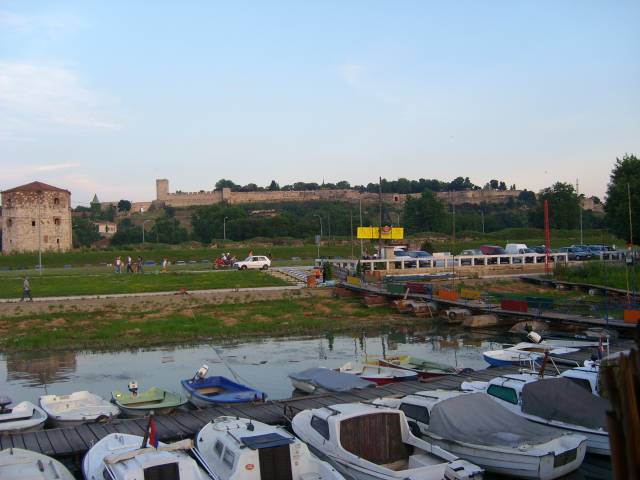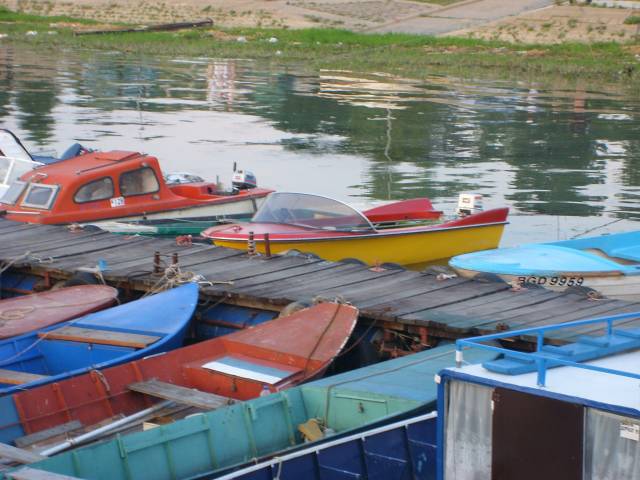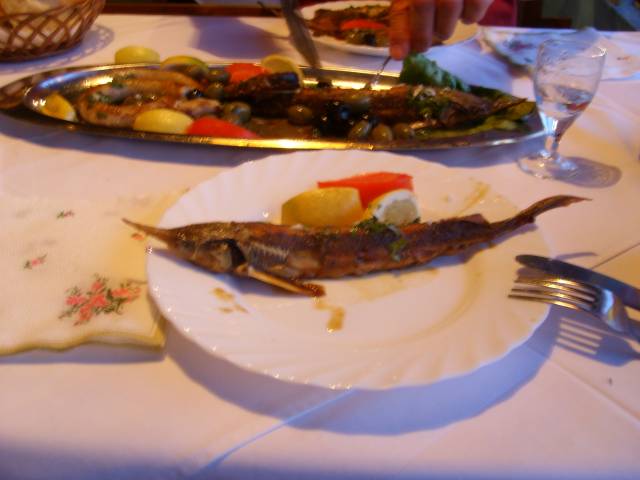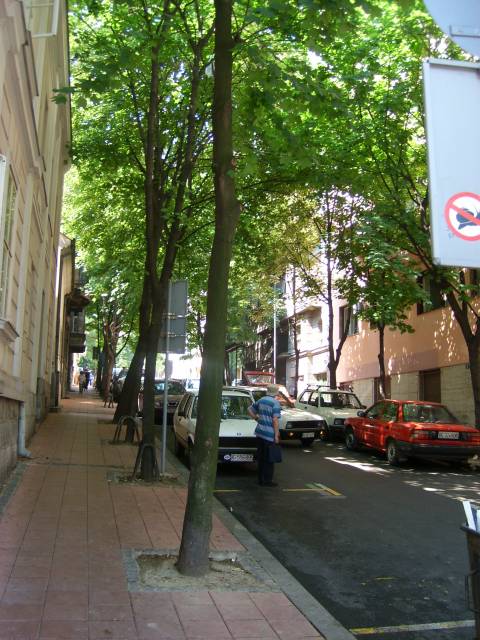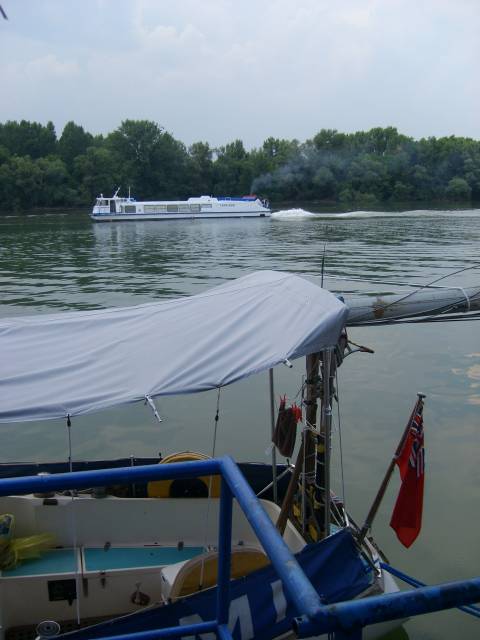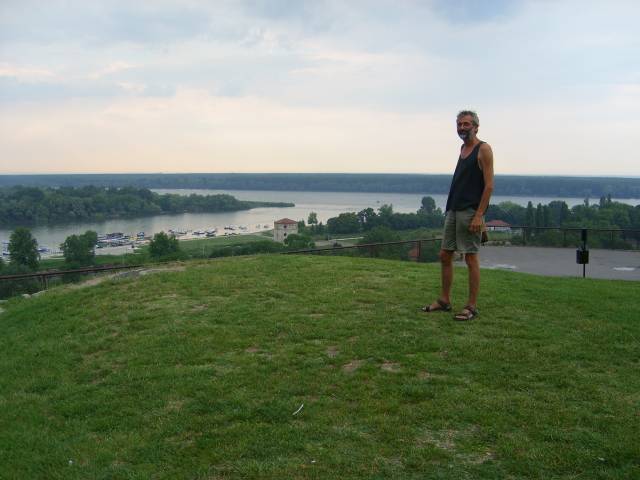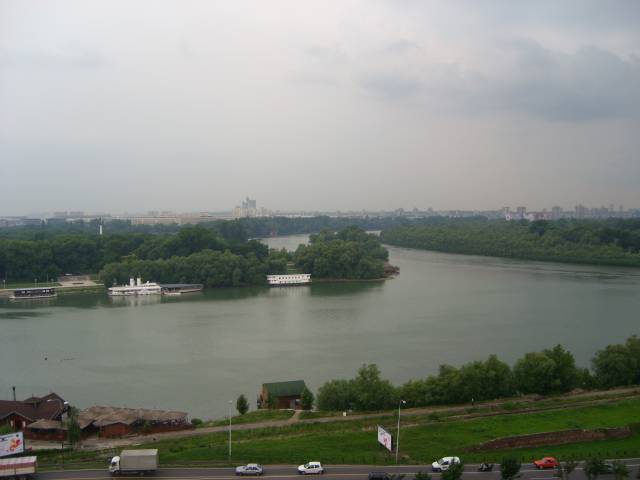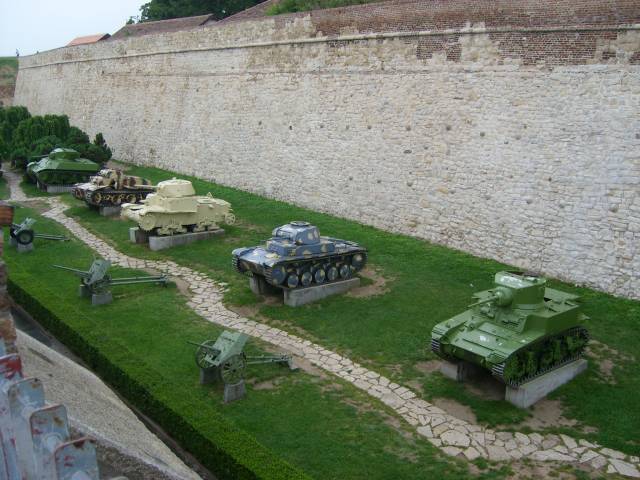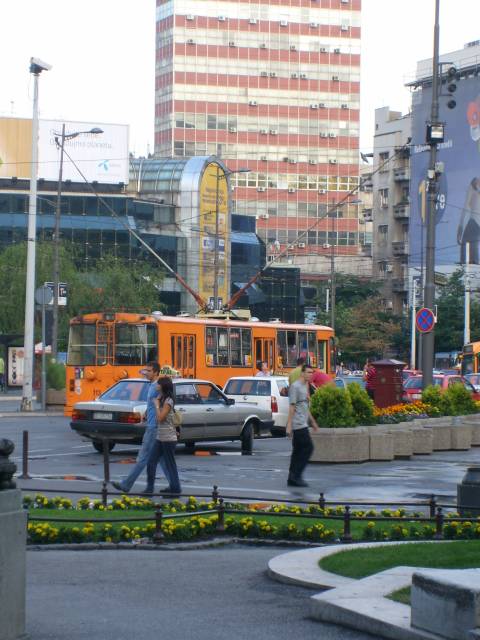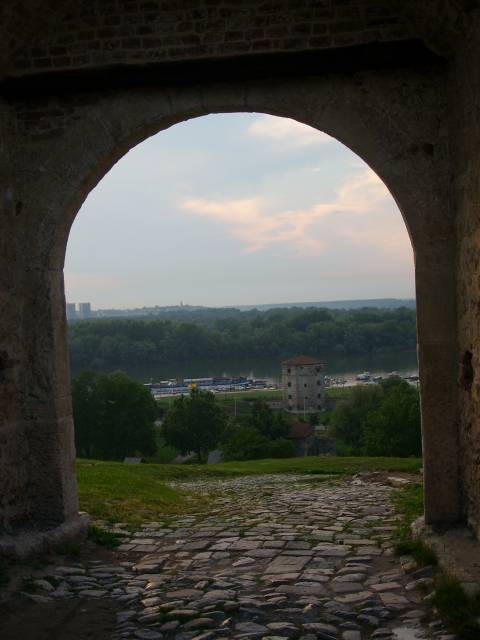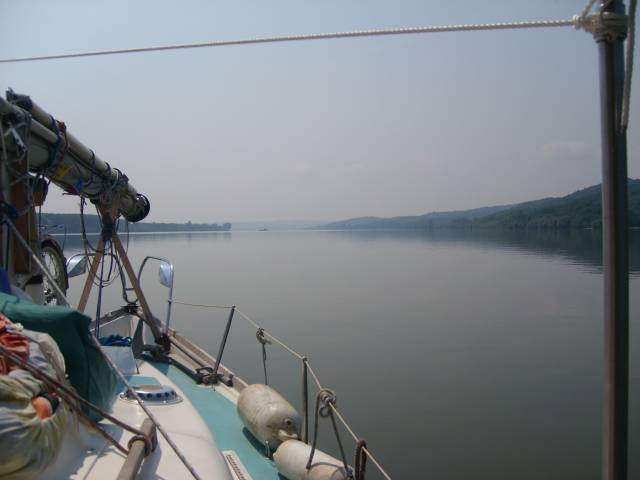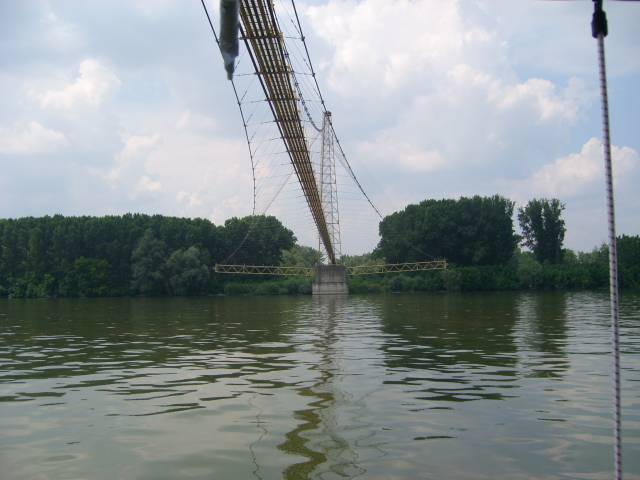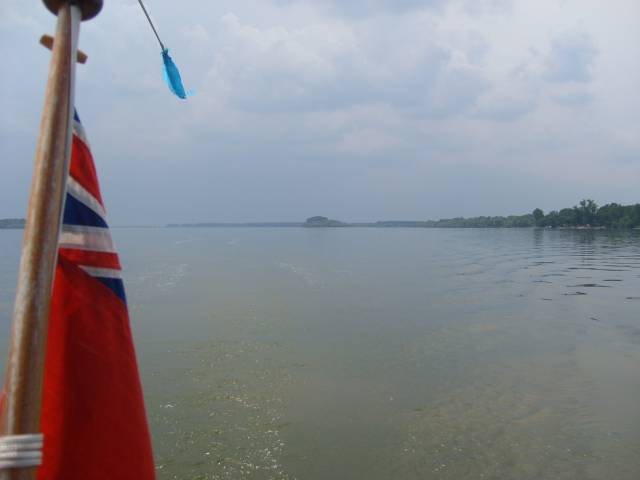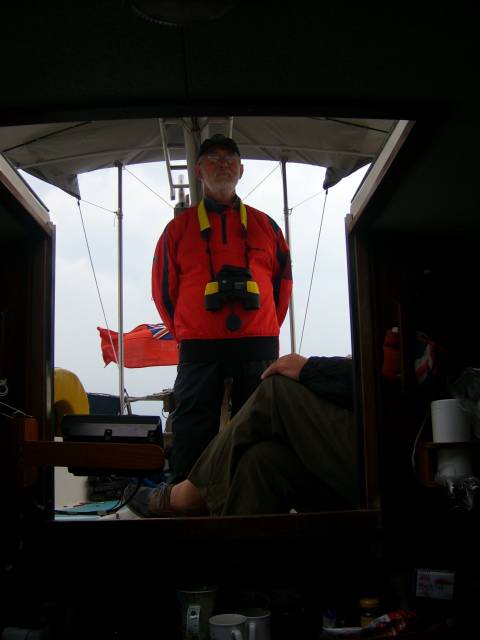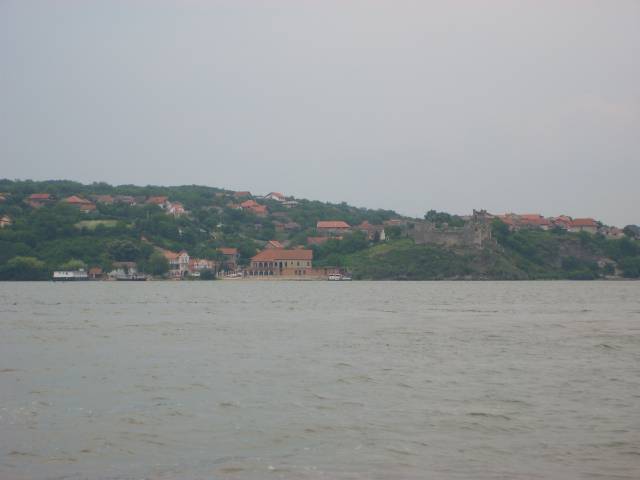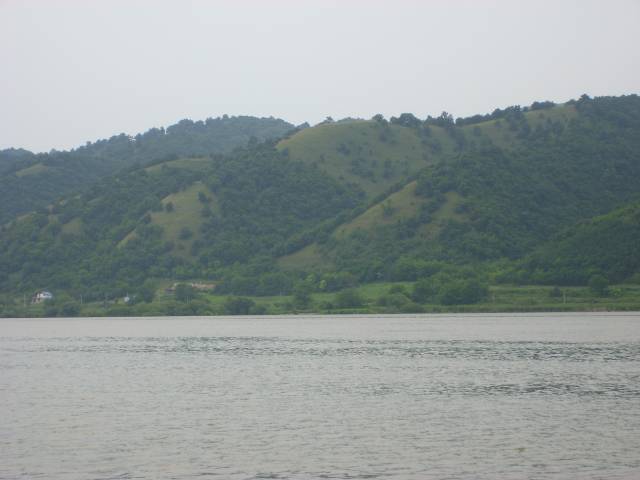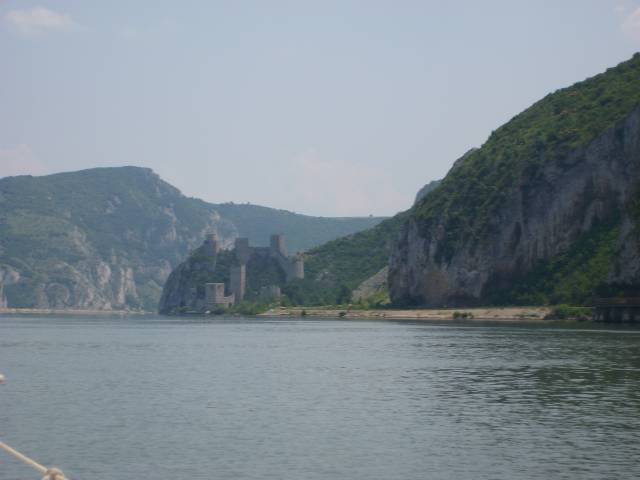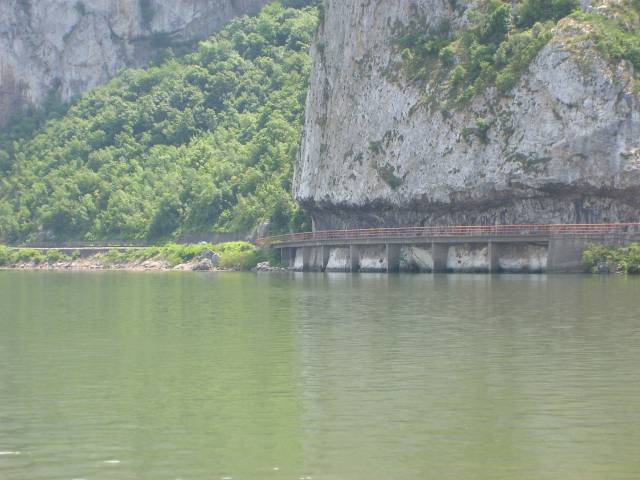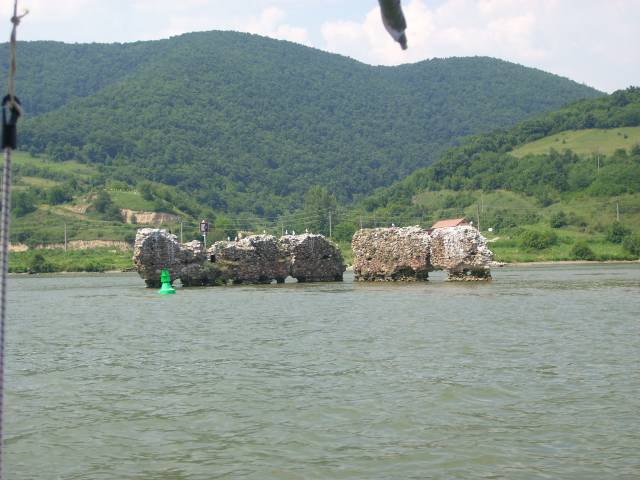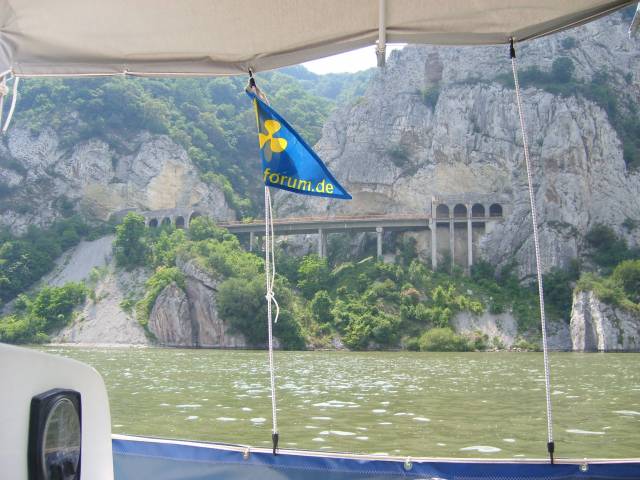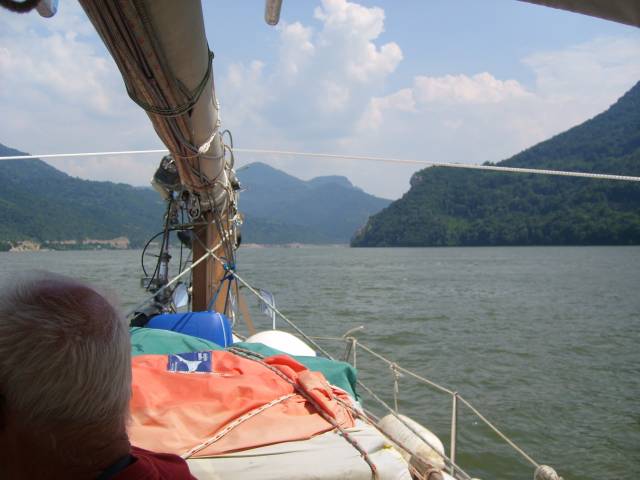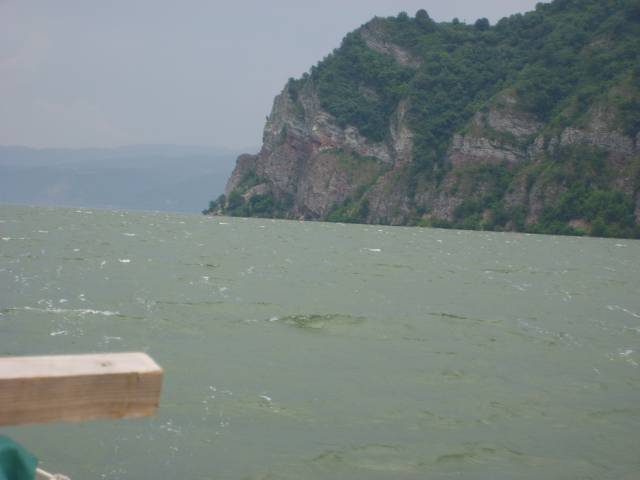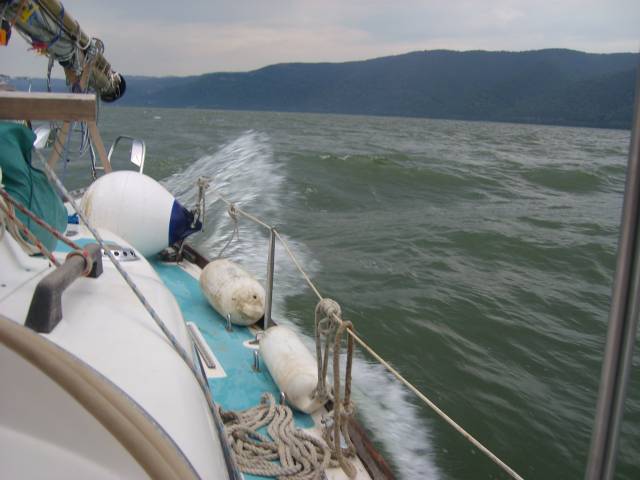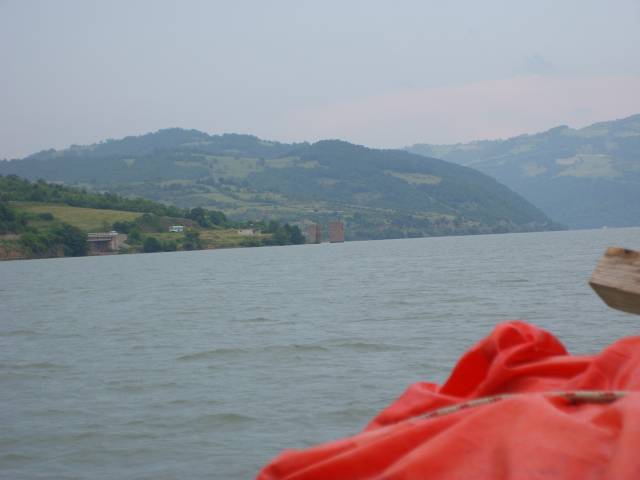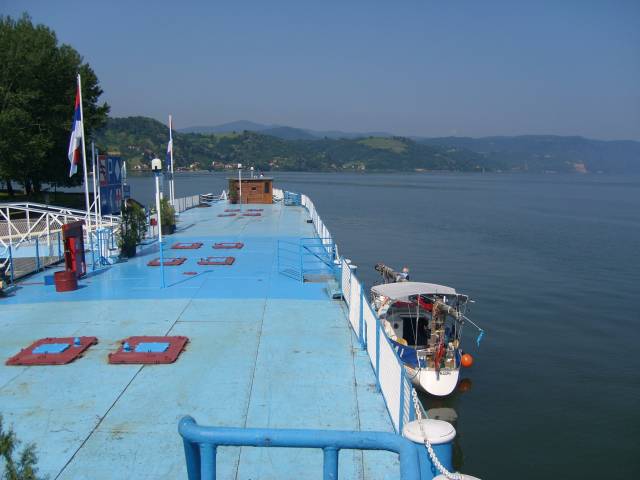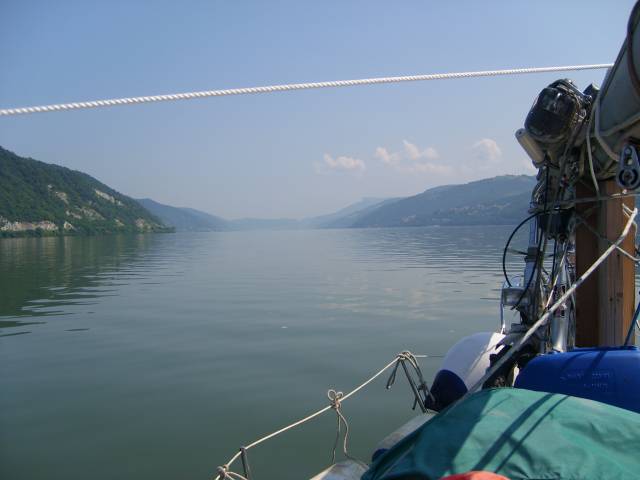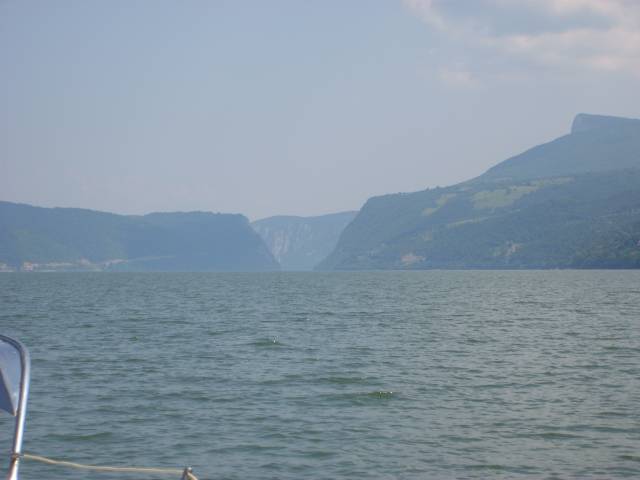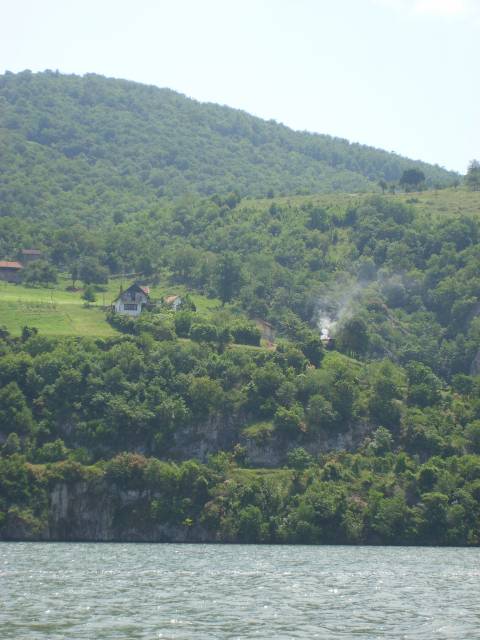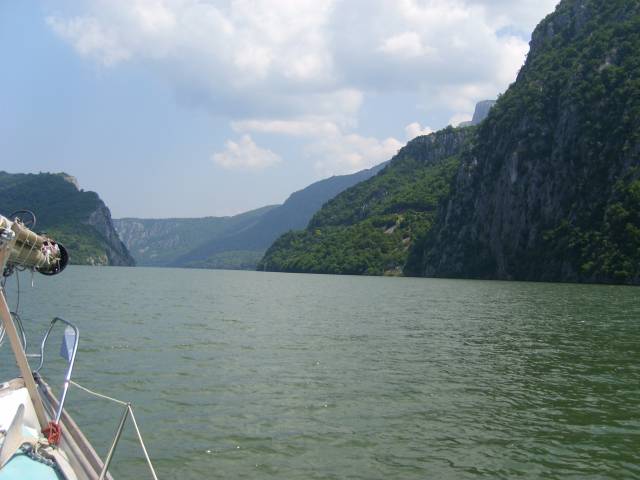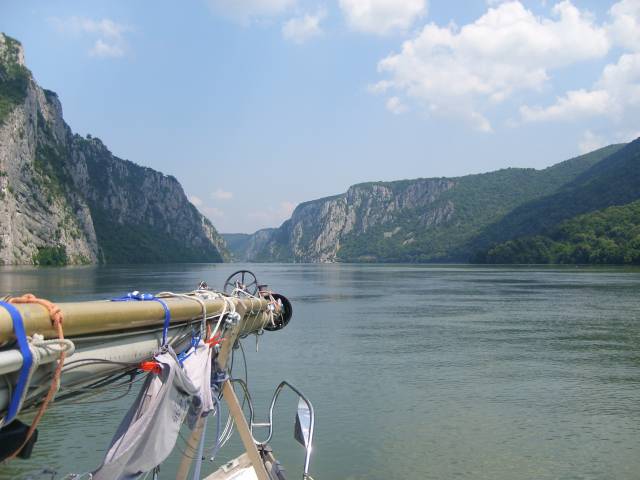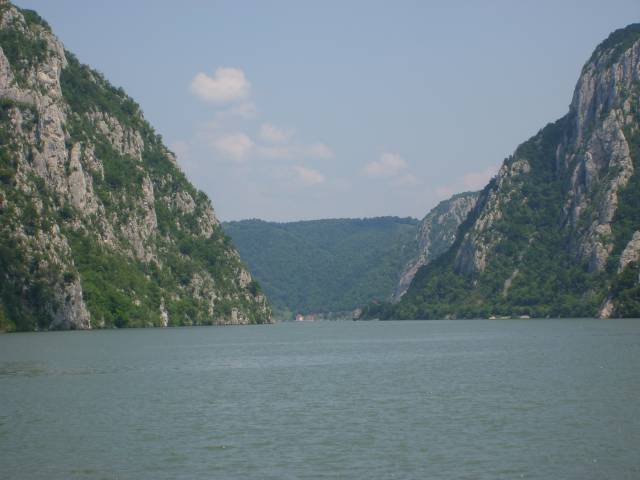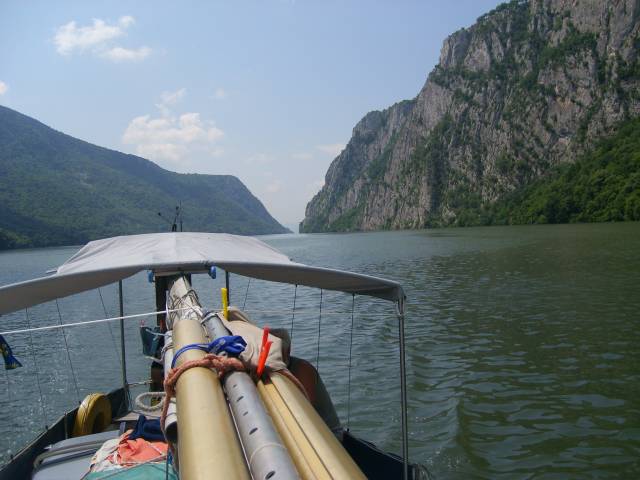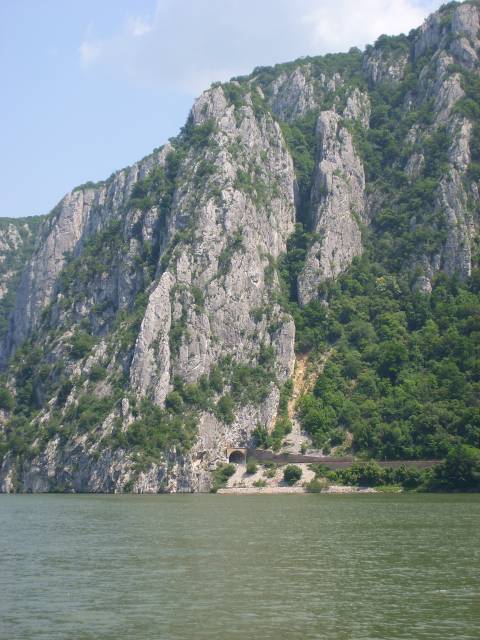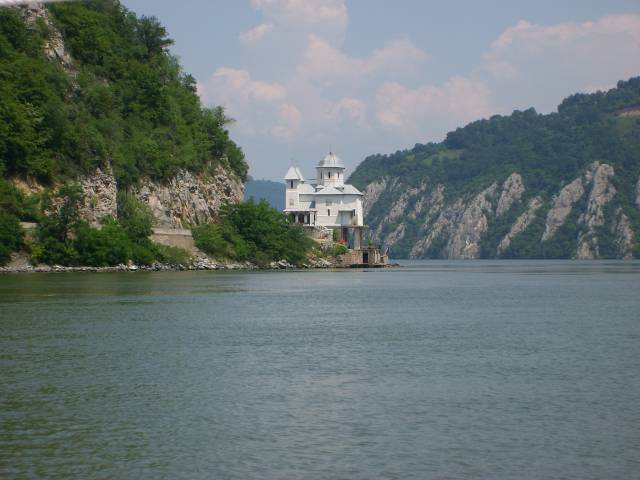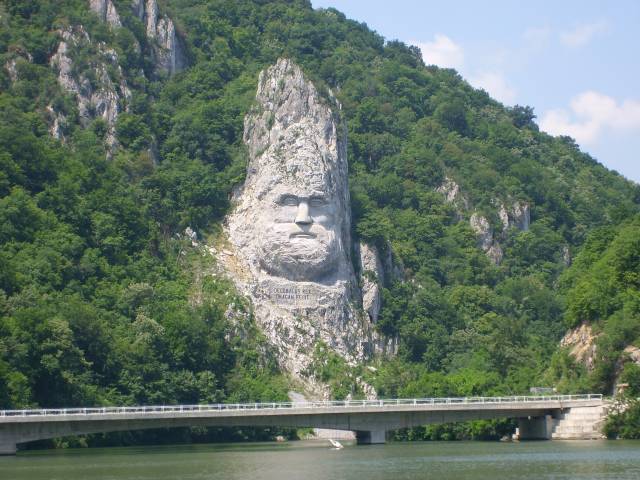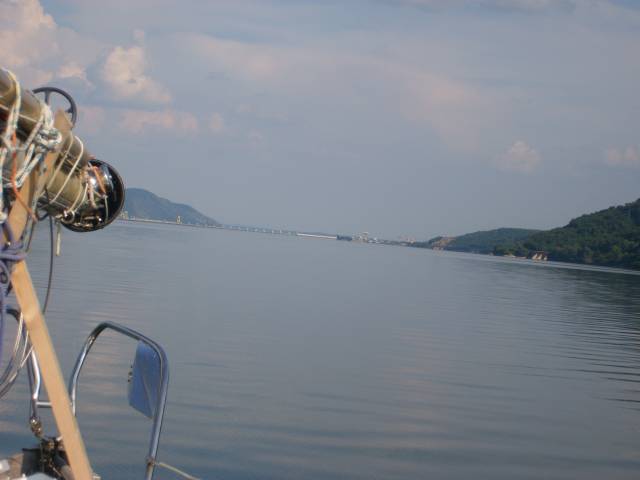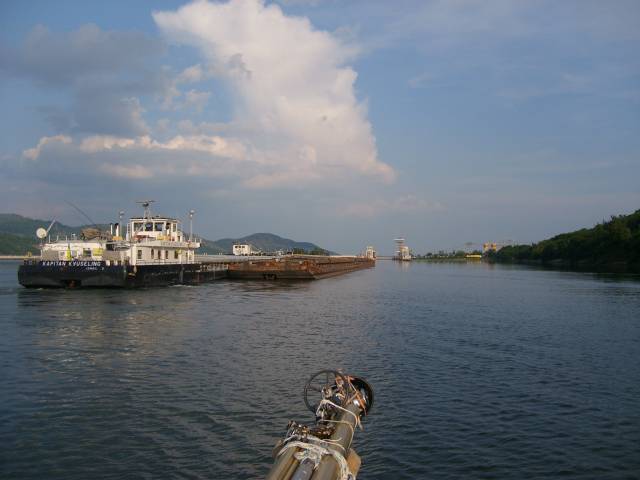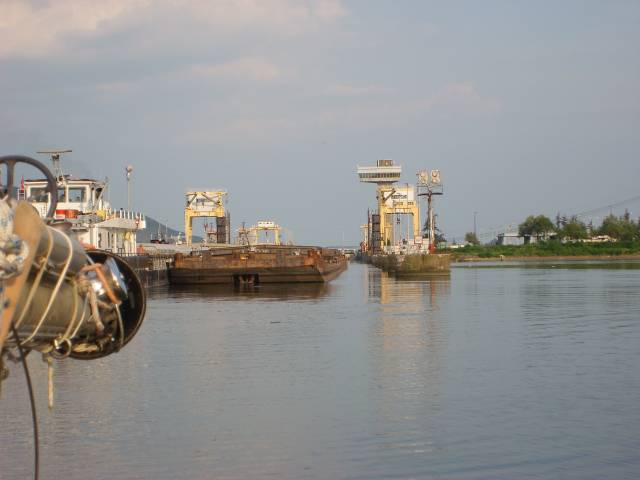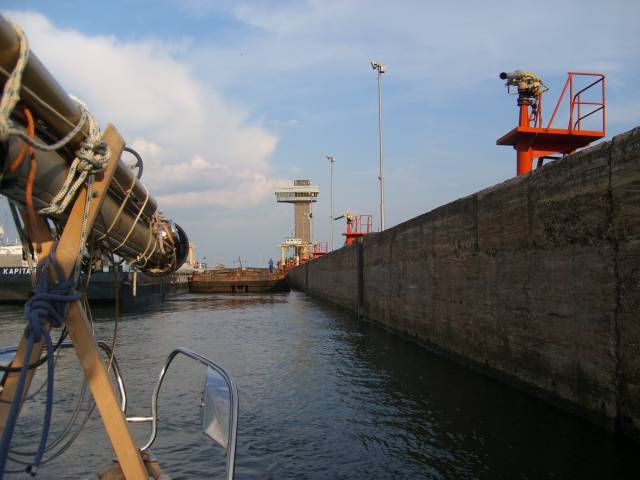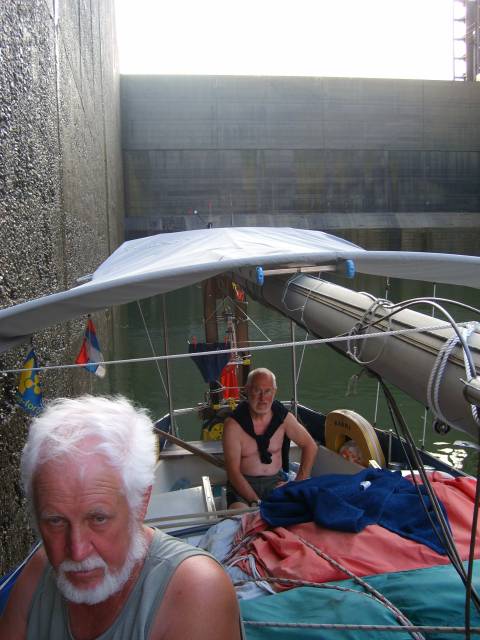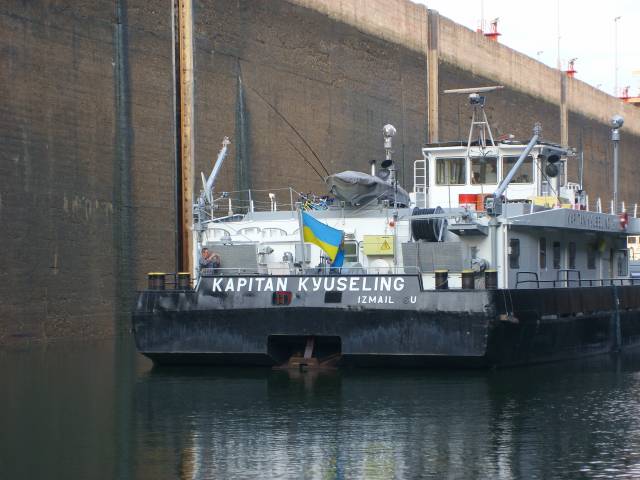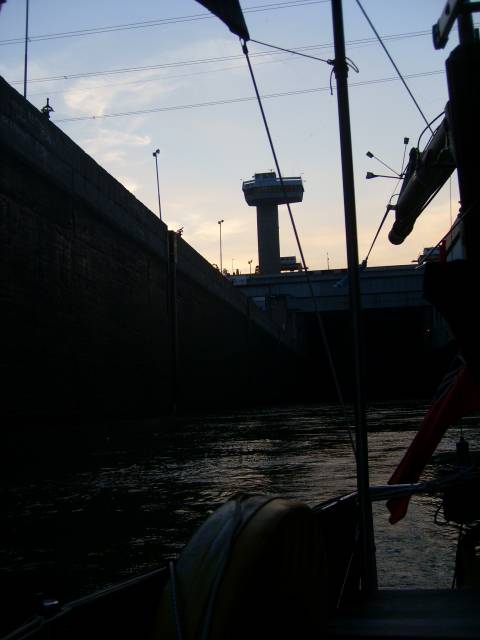The Serbian Danube km 1295 to 1075
We won't clear the border until Novi Sad, Serbia.
The first impression is very rural
Where do you think we're going? The fairway buoys are often difficult to spot.
After the bridges were bombed by NATO, the Danube was only navigable to a limited extent for years.
The beach of Novi Sad
The fortress "Peterwardein" or Petrovaradin. ( Петроварадин).
It was the largest fortress in Europe in the 17th century and is connected by a labyrinth of underground passages with a total length of 16 kilometres.
The old bridge pillars can still be seen on both sides.
At this point was the temporary pontoon bridge until last year.
(For this I got an info by mail, after which the bridge pillars are older and do not come from the destroyed bridges:".... the lonely bridge pylons below the fortress shown by you are not remains of the NATO attack, but stood already 1975 as ruins, when I was for the first time in Novi Sad. Rather, the new bridges have been rebuilt exactly in place of those destroyed by NATO, without the remains remaining (unfortunately not even from the beautiful ancient and
destroyed iron girder bridge below the fortress)."
Thanks for the info!
On 22 April 1999 all three bridges in Novi Sad over the Danube were destroyed by NATO aircraft by bombs.
The remains of the bridge at close range
A cabin cruiser can also be built with little means
In the marina Novi Sad we get map corrections and tips for the Black Sea
city tour
The ascent to the fortress
From above, mine has a wide view over the country
Novi Sad seems a bit run-down in many places
Serbian cars also carry stars
There's a lot of green in the middle of town
I also received an info by mail: "2. unfortunately Novi Sad is not as green as one of your pictures wants to show -
on the contrary, the increase of the green portion of the city is declared
municipal policy objective. However, the shown street is actually
very nice green, but unfortunately one of the few =)
3 Yes, there are "run-down" parts in Novi Sad - they are constantly
less. However, the war has left its mark and the
A few years ago, people were still struggling to survive, not to survive.
Saving the facades......" Thank you very much for this too!
After clearing in, it continues. Serbia is the only country on the route that charges transit fees. We paid 120, but I've heard other amounts.
The landscape is very beautiful
This estuary (Tisza, see report of the 2012 Tisza river crossing) is marked by the lighthouse
The Danube is getting wider and wider and traffic is increasing.
Again and again there are fireplaces on the shore. Many people seem to live right by the river.
Only a few villages reach the shore
Such dachas are common. Everything by the river is always on stilts.
Entrance to Belgrade
Belgrade also has a mighty fortress
Only few possibilities to moor on the shore.
We stay a few days alongside a restaurant ship. View towards the city.
The boat seems to be from the 60's
Belgrade also makes a green impression
Local public transport
Here I have a good view over the Danube. Our boat is on the left in the Save.
the Sava flows into the Danube in Belgrade. It is also navigable.
Some of the tanks exhibited in the moat look like toys. They belong to the Military Museum.
A bus has lost its overhead line
The estuary of the Sava. Here we lie a few days
From here the Danube becomes very wide.
A mighty fortress lies on the right bank of the river. The history books tell us that some of the mortar was mixed with blood instead of water.
The Danube is far and often lonely.
In ancient times, the river was strategically even more important than it is today.
A pipeline crosses the Danube
rainy day
Again and again castle ruins
On the left bank of the river a very rural Romania. Flocks of sheep everywhere. Transylvania has always been considered uncontrollable.
At the entrance to the Iron Gate a mighty fortress.
The Golubac fortress once guarded this constriction.
Building a road down here was probably not easy
Through the dam many a castle sank into the water. The buoancy must be strictly adhered to.
Serbia on the right, Romania on the left. We cross the Carpathians.
It's getting tight again. At the helm I have my hands full to keep the boat on course despite the turbulence.
When it gets further again, a violent wind comes up. Koschowa comes down from the Carpathians and can often be found here.
We fight against the wind by strong waves.
It's getting tight again. The ruin Tri Cula rises out of the water on the port side.
Our last night in Serbia.
500 meters away we find a gas station and fill up.
The water supply at the jetty is used for washing.
And on it goes.
The Danube eats its way through the Carpathians.
On both sides steep cliffs. Before the dam, this passage was notorious and dangerous.
The landscape is impressive.
There are still 972 km of Danube ahead of us.
Vessel traffic was regulated from these signal houses. Before the dam was built, there was a pilot station here. Travellers on the Danube had to change ships or continue on foot to Orsova. She was not safe from robbers by land and there were dangerous rapids on the river.
The road on the left was completed in 1834 under the Hungarian Count Szechenyi.
King Decebal on the Romanian shore
The dam with the huge locks comes into sight. We have exactly 944 km of Danube ahead of us.
Just in time before the lock a push train overtakes us.
Without any waiting time we drive in with you. The lock masters speak some German, so radio communication is no problem.
The lock measures 340 by 34 metres.
We're going downhill. We sweat at 40 degrees. Since we use the right lock, which still belongs to Serbia, the Serbian guest country flag is set, although we have already cleared in Orsova some kilometres before in Romania.
The Ukrainian team also takes souvenir photos. We have a friendly relationship with these skippers and are often in radio contact.
It's a double lock. From the first chamber it goes directly to the next one. The lock lasts a little less than 2 hours.
It goes on to Romania. A short farewell to the Ukrainians with whom we spent the last hours.
